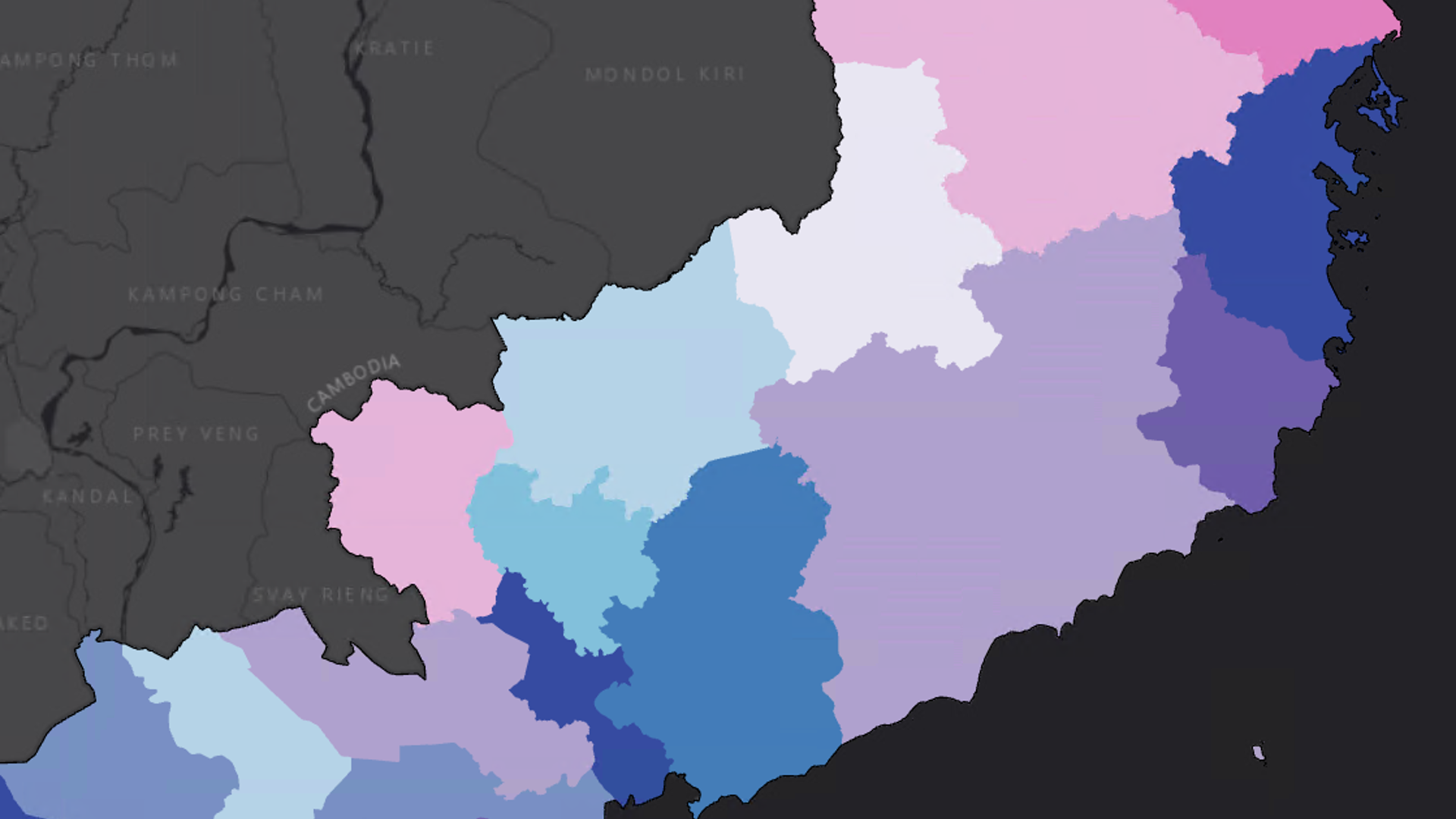
Vulnerability of Populations in Vietnam to Tropical Cyclones
Evaluating the Vulnerability of Vietnamese Populations to Tropical Cyclones



Team Members:
Robert Kearney
Caroline Williams
Advisors:
Yelena Ogneva-Himmelberger (Professor)
Affiliation:
Clark University
Course:
IDCE 30306: GIS for International Development in Practice
Team Members:
Robert Kearney
Caroline Williams
Advisors:
Yelena Ogneva-Himmelberger (Professor)
Affiliation:
Clark University
Course:
IDCE 30306: GIS for International Development in Practice
Introduction:
Vietnam is one of the most severely impacted countries by anthropogenic climate change and is threatened by potential increasing and intensifying tropical cyclone events (Tinh & Tuan, 2015)
Additionally, the West Pacific Basin is the most active and features the highest human mortality risk, thereby exposing Vietnam to tropical cyclones (Kossin, Emanuel, & Camargo, 2016)
Mangroves play an essential role between terrestrial and mangrove ecosystems by protecting coastal communities and ecosystems (Ellison & Zhou, 2012)
Cyclone Frequency Trends in Vietnam
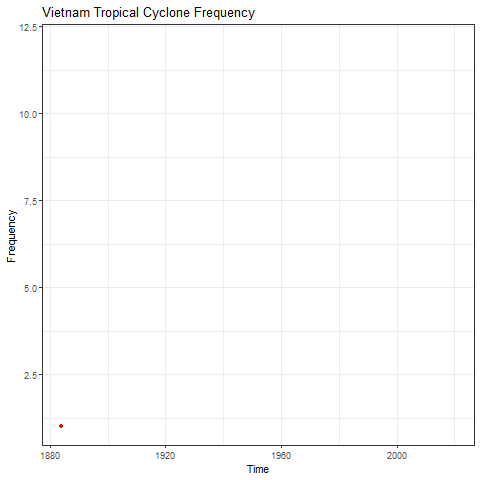
Cyclone Intensity Trends in Vietnam
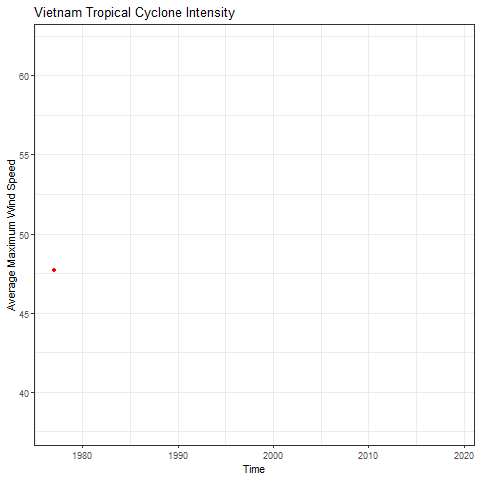
Data:
The data used in this project includes IBTrACS Cyclone data, WorldClim precipitation data, SRTM, Mangrove data from Clark Labs, administration boundary data, WorldPop population, land cover, protected areas, health facilities, and roads. Further detail is listed in the table below.
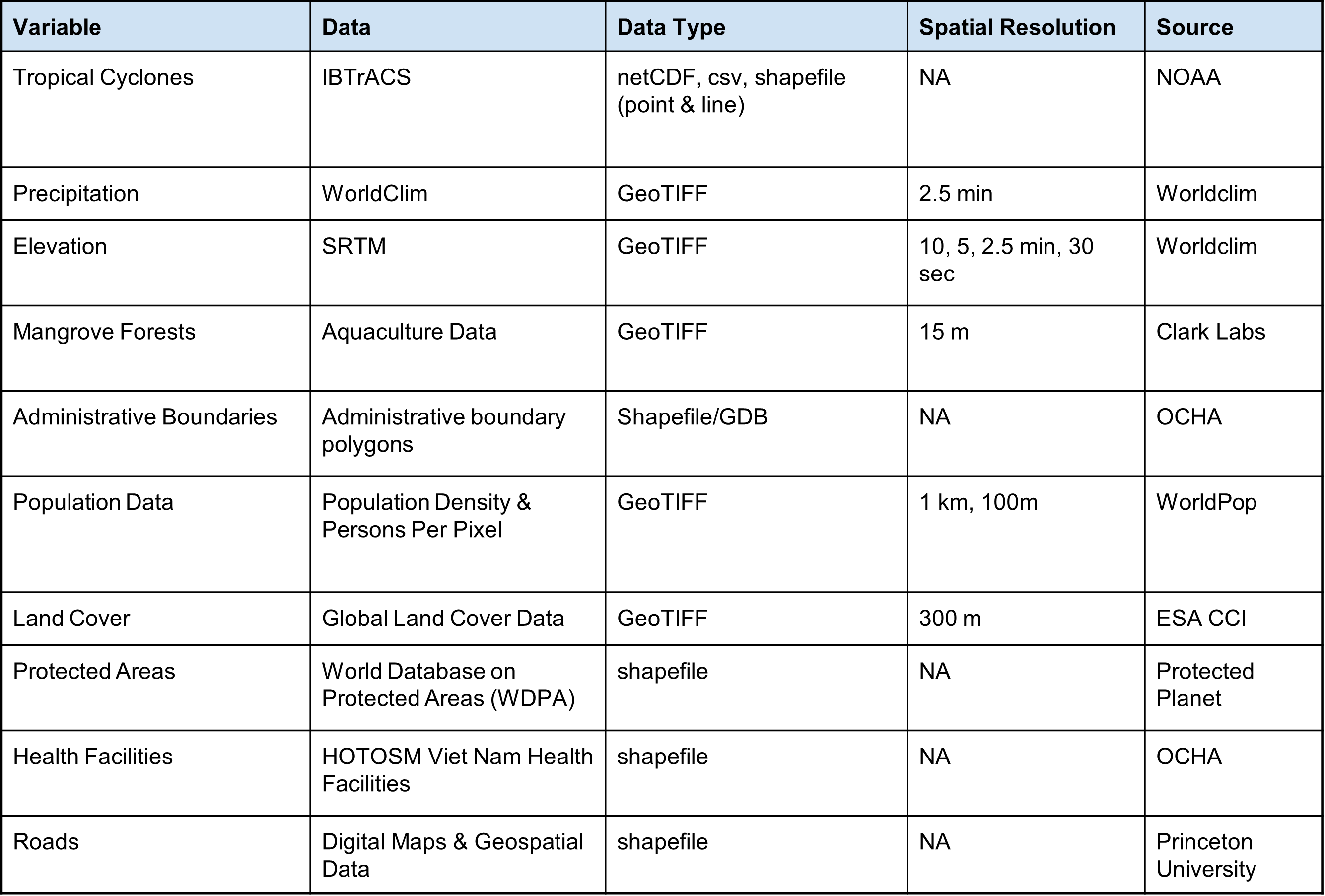
Methods:
Framework

Steps
1) Reclassify data from 1 (Low) - 5 (High)
2) Use Raster Calculator to combine reclassified data layers and create an Index
a) Exposure (8) + Sensitivity (3)) / 11
b) Adaptive Capacity (2) / 2
3) Create table of values using Zonal Statistics for provincial data
a) Mean Vulnerability
b) Mean Adaptive Capacity
4) Join tables to administrative boundary features
5) Apply bivariate symbology (Quantile)
Maps:
Bivariate Map Vulnerability & Adaptive Capacity
This map shows the vulnerability (exposure & sensitivity) and thee adaptive capacity of populations in relation to tropical cyclones in Vietnam displayed as a bivariate map. Pink colors show low to high vulnerability and blue colors show low to high adaptive capacity. Areas in the middle as purpe show a mix between having low to high vulnerability and adaptive capacity.
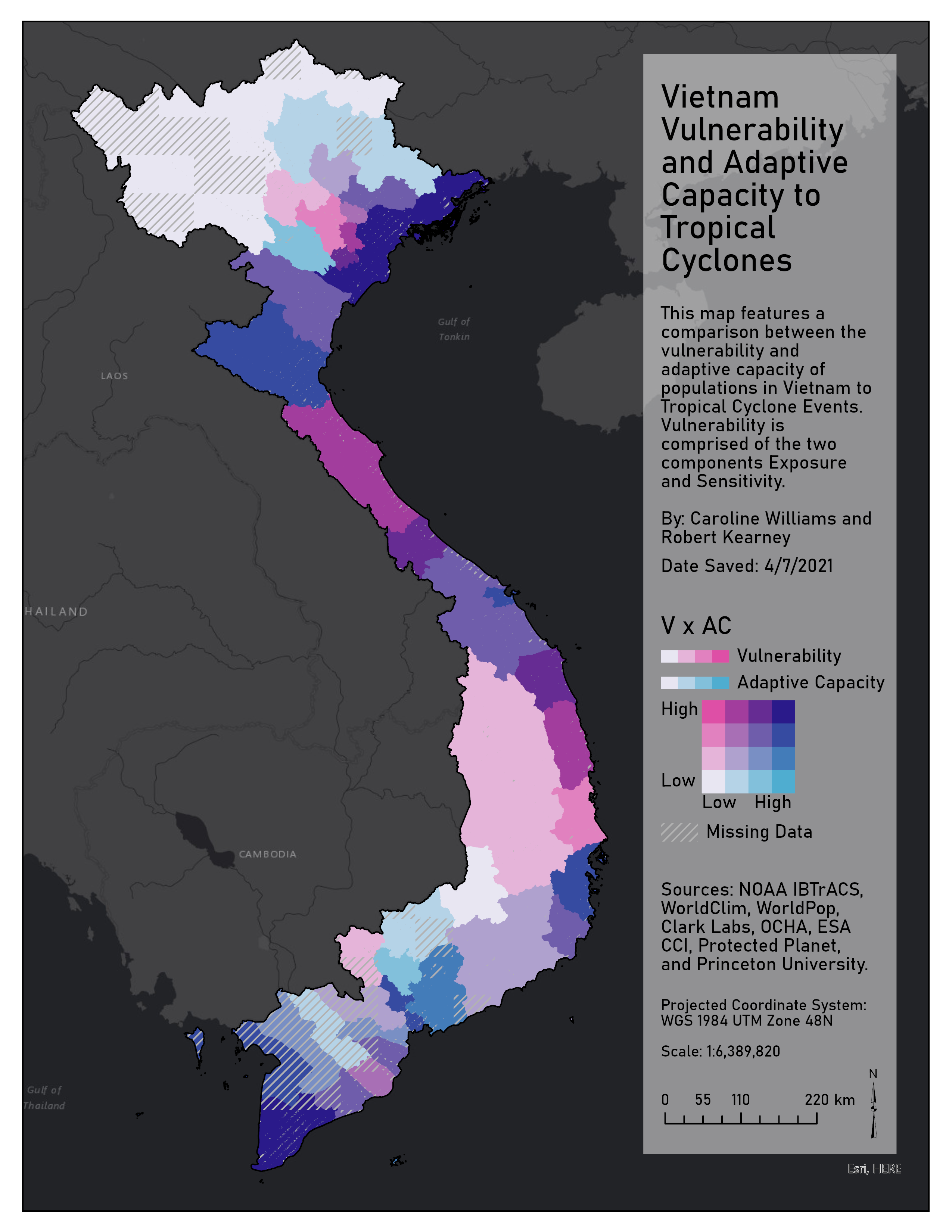
Vulnerability x Adaptive Capacity Comparison Map
This map shows the vulnerability (exposure & sensitivity) compared to the adaptive capacity of populations in relation to tropical cyclones in Vietnam.
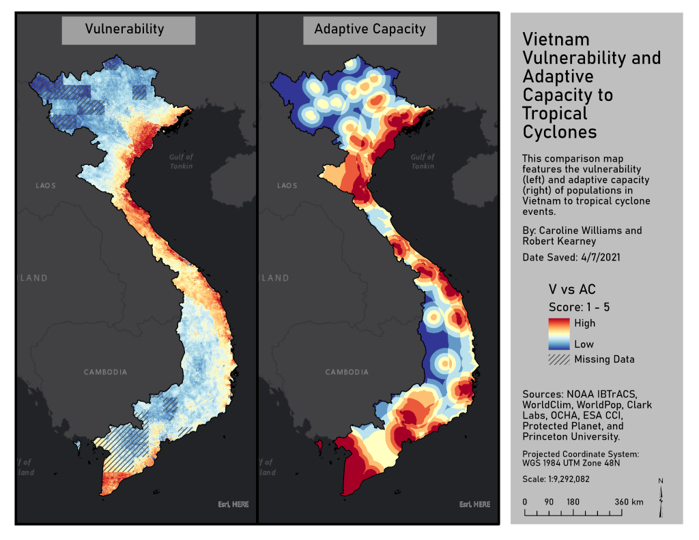
Discussion:
The northern coastline of Vietnam is highly vulnerable to tropical cyclones but also features a high adaptive capacity due to the protection of nearby mangrove forests and protected areas
Limitations includes the uneven distribution of variables between the three components, exposure, sensitivity, and adaptive capacity
Ideally, sensitivity and adaptive capacity would include more variables, however there were limitations in data availability
Future Work & Limitations:
One of the clear limitations of this modeling approach is that it is entirely qualitative.
Future work should include projected variables to predict the vulnerability at various climate scenarios (RCP 4.5 and RCP 8.5)
Projected variables can include predicted annual and monthly temperature and precipitation (WorldClim CMIP6), predicted land cover and mangroves using LCM in TerrSet 2020, and any other available projected climate and socio- economic data
Additionally, future analyses should incorporate additional variables in the sensitivity and adaptive capacity components
We also recommend exploring aspects of direction in tropical cyclones and at what angle they often face mangrove areas
This framework is widely used and should continue to be incorporated into geospatial vulnerability assessments. While using and MCE approach is sufficient, we also suggest further exploration on alternative methods of aggregating data
Please feel free to contact me at my email address or through my LinkedIn Account below.
cawilliams719@gmail.com